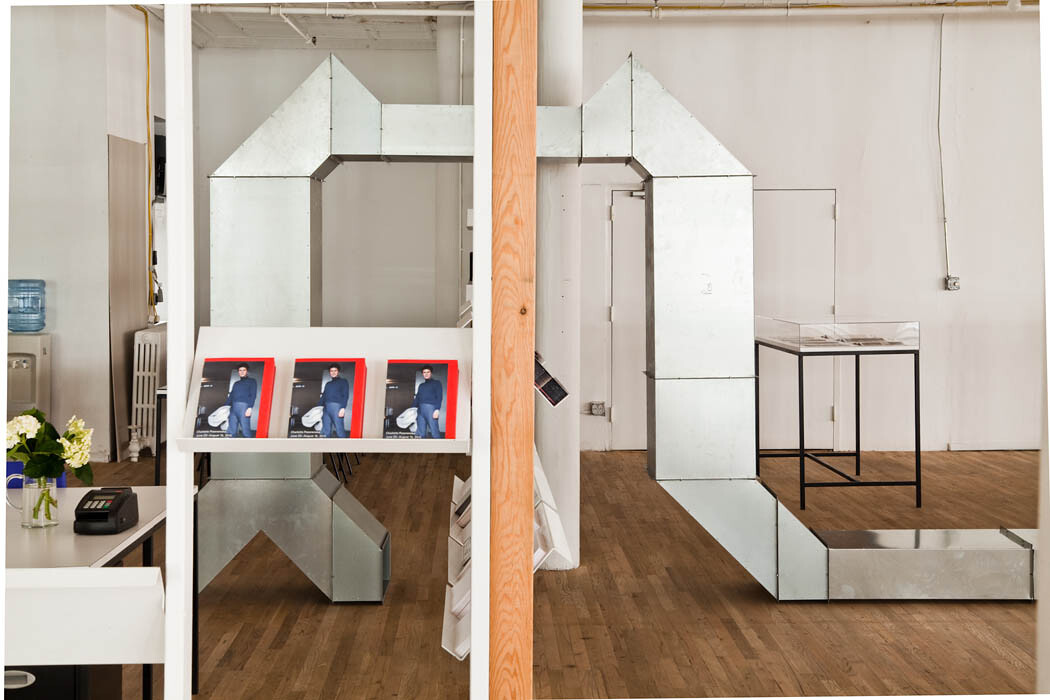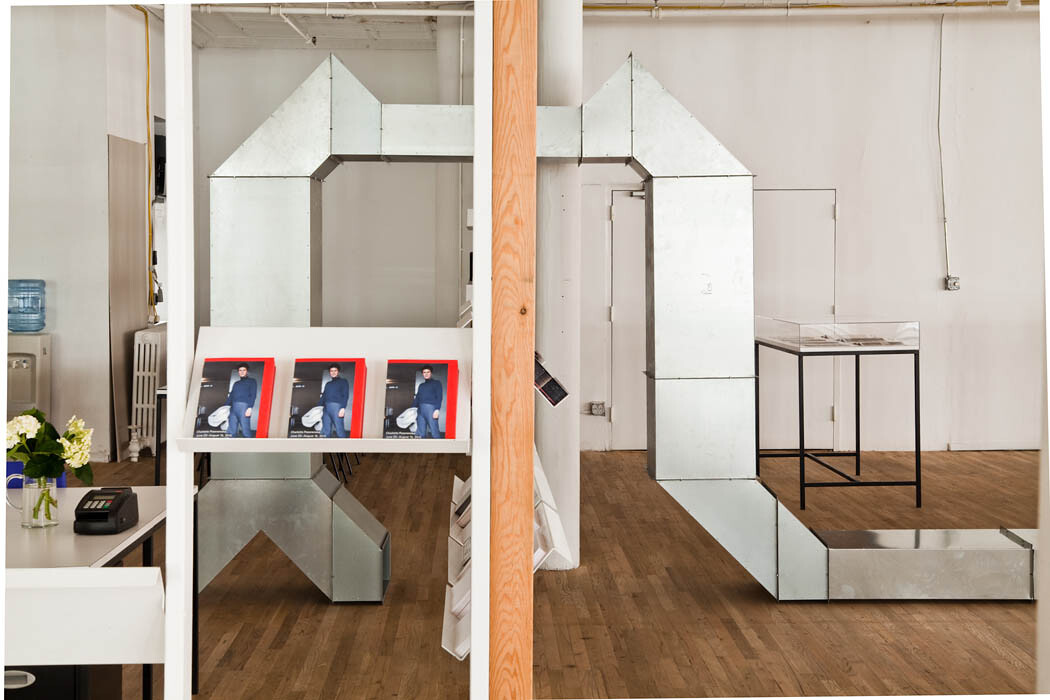Everywhere you look these days there seems to be some exhibition, text, or reference to the work of German artist Charlotte Posenenske (1930-1985). And often enough, these presentations focus on a central paradox; that the artist decidedly ended her career circa 1968-9—by ceasing to make new work, while also preventing the extant work to circulate—and started a career in sociology thereafter. Adding fuel to the fire of this apparent “disavowal” of her artistic practice, Posenenske’s work seems to prefigure many current debates around art’s social relevance. In particular, the late “ducts” or “tube” series—comprised of modular and variable ventilation-like parts meant to be reconfigured through the decisions of others—are not dissimilar to the “relational turn” toward volition and open-endedness as a means to foster new forms of sociability. Complicating matters, Posenenske’s self-exile was coupled by her written condemnation of the instrumental use of public art and its worth in her reasons for turning down a commission in a new housing development—curious as Posenenske herself placed artworks outside to promote incidental encounters. Here, a second mirror, one reflecting the arguments of many relational art detractors, i.e., that artworks create simulations of social exchange and are allegorical at best, seems to be at play. Whatever the answers to these conundrums may be, focusing solely on this one moment of the life and intellectual development of Posenenske is a little narrow. Such foibles are the main problem with the recent display of her Square Tubes Series D, 1967, at Artists Space with German curator Stefan Kalmar at the helm —the first institutional solo exhibition of the artist’s work in the United States of America.
The Artists Space exhibition should be commended as an act in-itself. After all, there is an inherent intentional fallacy in the theory that Posenenske claimed—through text and implied through action—that artwork attempted, yet failed to create the most expedient political interrelations. And since so many have now chosen to exhibit her work, it has been “freed” to function on its own. Instead of following a “death of the author” critique, the inverse position, that is, Posenenske’s biography and trajectory, is worth visiting here first.
Born in Germany before the war, the half-Jewish Posenenske spent her youth on the run and in hiding during the regime of the National Socialists, aided, of course, by the altruism of activists who knew the high and very real stakes of such actions. After Germany’s defeat in the war, Posenenske experienced a bicolor, make-do existence amidst mass devastation, which was followed by the thrust of the Wirtschaftswunder, a vast “Americanization” of the new German industrial, urban, and economic landscape. Posenenske made studies on building façades around the time when she married an architect and took an interest in American Minimalism and its tenets. Working her way through these influences, Posenenske arrived at an investment not only in the “desubjectification” of art through mechanical processes, but also through the study of the actual craft of her production through the bending, curving, and scoring of the material of her work. Possibly due to all of these culminating factors, Posenenske synthesized ideas of industrial production with debates on desubjectification through the creation of infrastructural-like, pre-fabricated works often configured by the labors of the art gallery or costumed Lufthansa mechanics. From this view grew the possibility of flexibility, and as such, Posenenske began to ask how such flexibility empowers the end-user. At this point, Posenenske left her architect husband and married a sociologist just before leaving the art world in favor of sociological study, to specialize in none other than issues of labor—a theme already nascent in her employment of mechanics and the placement of her work in factories, not to mention her own role as an art worker.
Such a trajectory shares immense valences with Posenenske’s artistic production, which could be seen as only one form of her general investigation of the world around her, from Minimalism, to performance-enabled work, to issues of mass production, to the larger umbrella of sociological studies of labor. Could the hoarding of her work been not against the agency of her art, but her inability to reconcile the autobiographical nature of her art with that of her desire for desubjectification? It’s important to note that the price of her work—which was sold at cost to make it accessible—was enabled by Posenenske’s financial independence through inheritance and was thus more philanthropic than activist. Also, this “accessibility” really only privileges the end-user and not the fabricator. After all, although Posenenske attempted to eschew her agency through the logic of multivalent and recombinant structures, the origin of the said systems ultimately belonged to her and, thus, were ruled by the original set-up therein. Could this have been an inescapable paradox that Posenenske could not reconcile? Authorship is a statement of historical fact, not a property to be traded, such as ownership. Philosophically speaking, only external systems, outside of subject-hood, could offer an escape from such an epistemological pitfall—retroactively reinforced by her ultimate control of the work. Instead of going further into this misalignment of the suspending of contextual bias that anonymity affords with that of a conflated organizational-political stricture, agency, although diminished, is never destroyed but transferred. And although Posenenske tried to downplay her role in the presentation of her work, by necessity this control was placed in the hands of others.
With this in mind, isn’t it telling that the work is now seeing new light after the actual death of the author, who isn’t around to police her brand? This leads to a greater question: is the contemporary display of Posenenske’s work a case of revisionism? Posenenske’s break with art and her associated political agenda potentially serves as foil to current claims of participatory practice. That is, if Posenenske disengaged from the discourses around her work, what does this mean for similar efforts and claims?
Instead of asking if Posenenske approached social questions from the wrong angle and, if such, had to elope to another field to answer these questions, exhibitions, like that at Artists Space, try to re-absorb her work back into the art canon. This serves not to validate Posenenske and her oeuvre, but contemporary discourses, which Posenenske’s withholding threatens to mediate—which sadly also sidesteps a fuller investigation of our own discourses. The Artists Space exhibition itself featured three “events” wherein reconfigurations of the work were sanctioned. Outside of the one logical reconfiguration by the exhibition staff, a device employed by Posenenske herself, two contemporary artists, Rirkrit Tiravanija and Ei Arakawa—whose work skates a similar edge of participatory practice—were highlighted in two separate “openings.” In addition, by focusing on one of the ultimate realizations of Poseneske’s work, dating from just one year before her famous “schism” in 1969, Artists Space overplays this moment to a point of quoting from a life and a political milieu out of context. Fortunately, this beautiful show did bring the work of Posenenske to an American audience, however, a fairer treatment could only be achieved by an established retrospective displaying the context around the artist as thinker, and her final direction of interpreting this through another form of thought, sociology. Such would be the way to pay discursive credence to Posenenske’s materialist view of the world. Only with a close study of the “Case of Posenenske” and not through the lenses of instantly constructed linage and various other anachronistic rhetoric—Posenenske, if truth be told, was marginalized during the development of relational practice—could a fuller, richer, and bracketed set of questions unfold about the artist, her work, and her ideas. And considering the current macro-economic errors of believing that de-skilled labor and high rates of unemployment can still produce a consumer class to lift the current economic crisis, Posenenske’s ultimate move toward issues of labor over that of end-user or service based economies is something that art workers and audiences should keep a keen interest in, no matter how that idea manifests.






